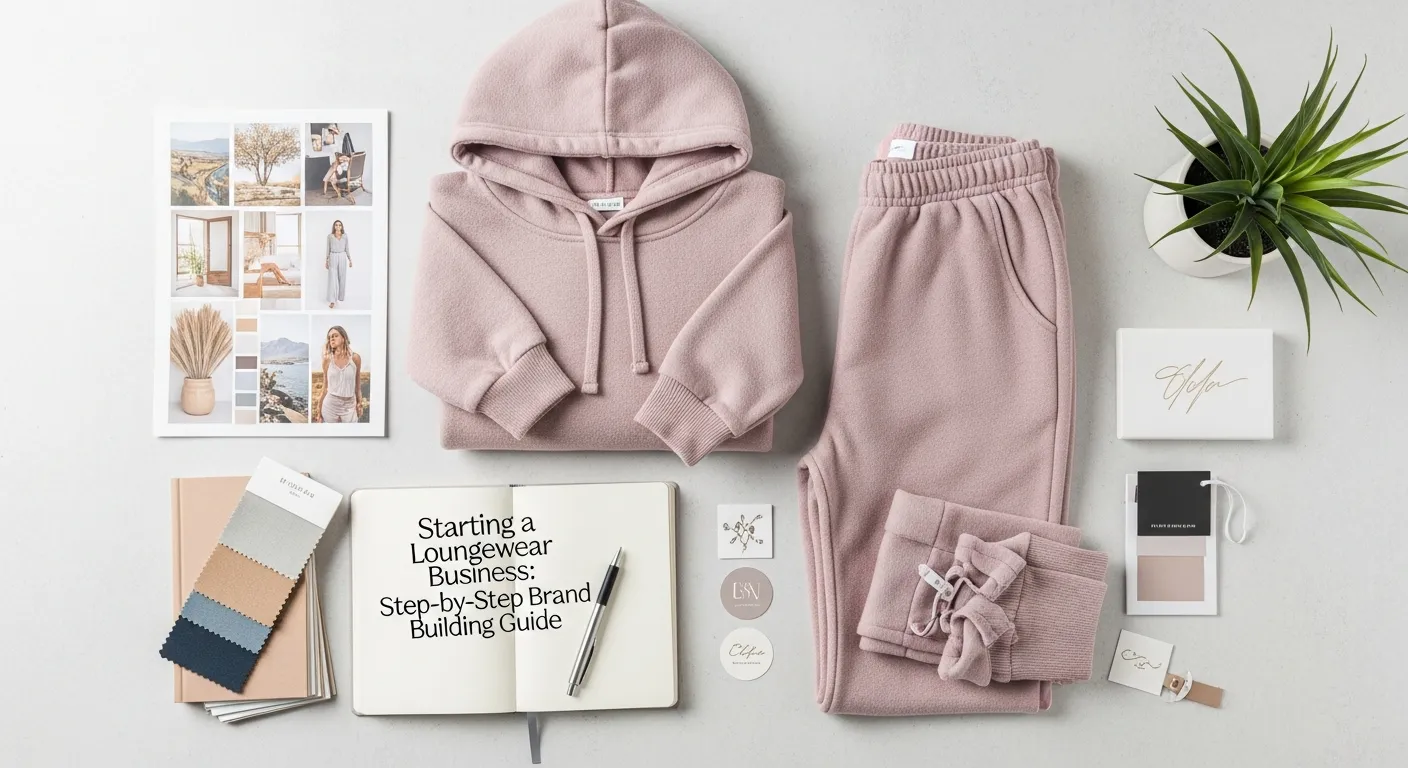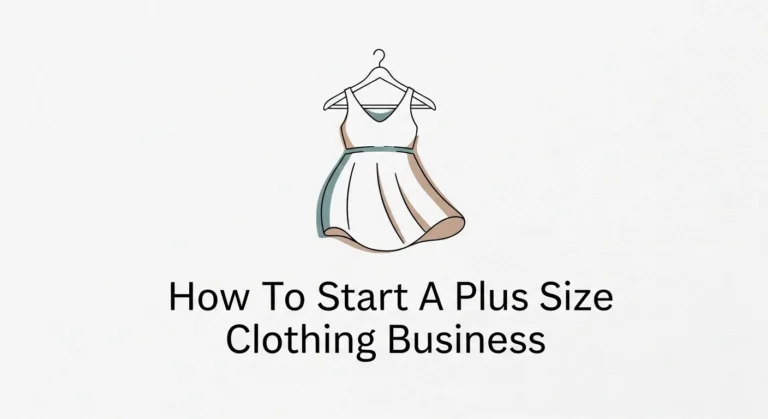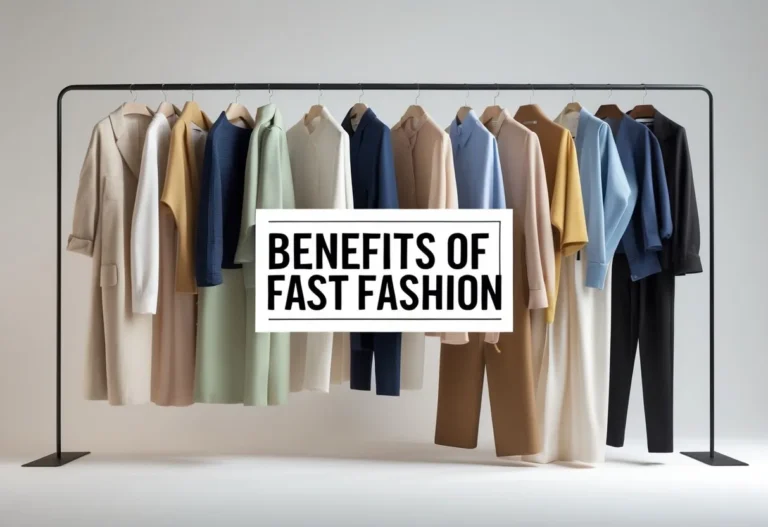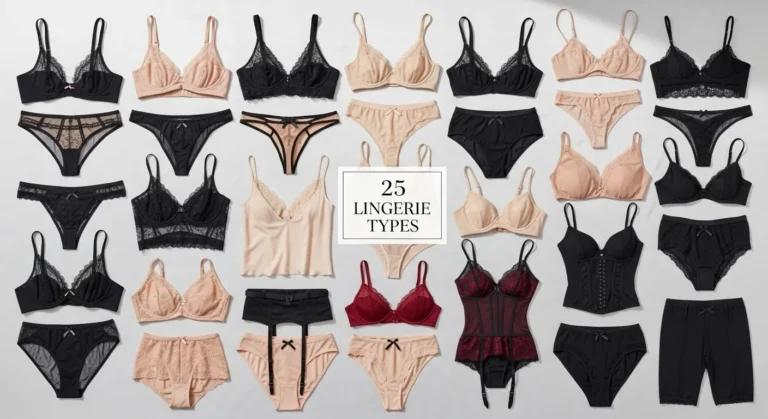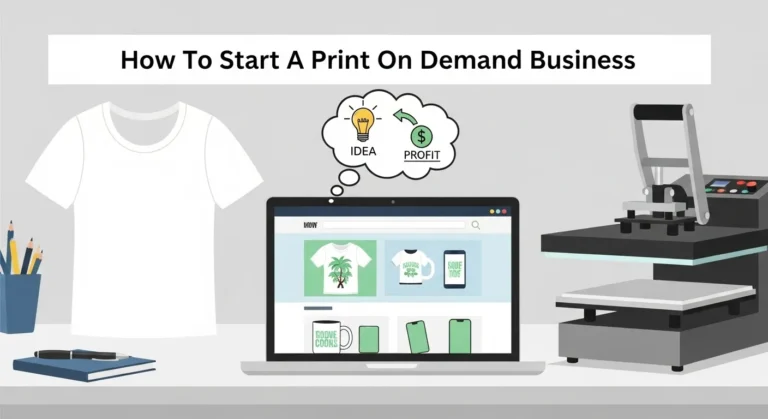Starting a Loungewear Business: Step-by-Step Brand Building Guide
Starting a loungewear business means creating clothing that is comfortable, stylish, and practical for everyday wear. To build a successful brand, a clear plan that covers design, market needs, and customer interests is essential. Understanding what makes your loungewear unique and how to reach the right audience will help you stand out in this growing market.

This guide walks through each step, from shaping your brand’s identity to designing the collection and setting up the business side. It also covers ways to promote your loungewear and grow the brand over time.
By following these clear steps, anyone can turn a simple idea into a cozy loungewear brand that appeals to many.
Key Takeways
- Defining a clear brand identity helps attract the right customers.
- Researching the market guides product design and pricing.
- Effective marketing and business setup support brand growth.
Defining Your Loungewear Brand Identity

Building a strong loungewear brand requires clear decisions about who the clothes are for, what makes the brand special, and the values it stands for. These elements shape how customers see the brand and help guide design and marketing choices.
Identifying Your Target Audience
The target audience is the group of people most likely to buy your loungewear. Knowing their age, gender, lifestyle, and preferences helps create products they want. For example, young adults might prefer trendy, colorful sets while older customers may value comfort and classic styles.
Focusing on customer needs, like sustainable materials or affordable prices, sets a clear goal when designing and marketing. Research tools like surveys, social media insights, and competitor analysis help define this audience.
Choosing a Niche Within Loungewear
Loungewear includes many styles, so picking a niche narrows the focus. A niche could be eco-friendly fabrics, plus-size options, or loungewear for active lifestyles. This choice helps the brand stand out from large, general markets.
Choosing a niche also guides product selection. For example, a niche in luxury loungewear means focusing on premium fabrics and tailored fits. Making this choice early shapes production and advertising strategy.
Establishing Brand Values and Aesthetics
Brand values are the principles guiding business decisions, such as sustainability, comfort, or affordability. These values influence product design, marketing tone, and customer service choices.
Aesthetics refer to the visual identity like colors, logos, and packaging style. A cozy, minimalist look with soft pastels conveys calm and comfort, while bold patterns target a more playful audience. Together, these create a consistent brand image that customers recognize and trust.
Conducting Market Research for Loungewear

Market research helps identify where a loungewear brand fits in the market. It involves knowing who else sells similar items, what styles are popular now, and if customers really want the products planned.
Analyzing Competitors
Competitor analysis starts by listing direct and indirect competitors. This includes big brands, smaller boutiques, and online stores selling loungewear.
Key factors to check:
- Pricing: How much do they charge for similar items?
- Materials: What fabrics do they use? Are they eco-friendly or premium?
- Designs and styles: Are they focusing on minimalistic, bright, or patterned loungewear?
- Customer reviews: What do buyers praise or complain about?
This info shows gaps in the market and helps decide on pricing and design choices.
Spotting Current Loungewear Trends
Look for trends by checking fashion blogs, social media, and trade shows.
Examples of rising trends include:
- Sustainable fabrics like bamboo and organic cotton
- Gender-neutral loungewear styles
- Matching sets and mix-and-match pieces
- Comfort-focused designs with stretch and softness
Trend spotting helps shape collections that customers want right now.
Validating Product Ideas
Test ideas before full launch to avoid costly mistakes. Methods include:
- Surveys: Ask potential buyers about fabric preferences and color choices.
- Focus groups: Gather a small group to try samples and give feedback.
- Pre-orders: Offer limited items in advance to gauge demand.
Validating reduces risks and confirms if products will sell well.
Designing Your Loungewear Collection

Designing a loungewear collection means focusing on comfort, style, and quality. Choosing the right fabrics, crafting original designs, and considering eco-friendly materials are key parts of this process.
Selecting Materials and Fabrics
The most important factor in loungewear is comfort. Fabrics like cotton, bamboo, and modal are soft and breathable, making them popular choices. Cotton offers durability and moisture-wicking properties, while bamboo is naturally antibacterial and eco-friendly.
Stretch fabrics like spandex or elastane provide flexibility, allowing for better movement. Blending these materials can improve the fit and feel of the clothes.
Producers should also think about fabric weight. Lightweight fabrics suit warmer climates, while heavier ones offer more warmth. Testing different materials helps find the right balance between comfort and durability.
Creating Unique Product Designs
Unique designs help a loungewear brand stand out. Simplicity often works best in loungewear, with clean lines and minimal detailing. Features like adjustable waistbands, roomy pockets, or soft ribbed cuffs can add comfort and function.
Colors and patterns should match the brand’s style. Neutral colors like beige, grey, and pastel tones are popular because they look relaxed and natural. Adding subtle prints or textures can make the pieces more interesting without overwhelming the design.
Sketching multiple versions and gathering feedback can refine the final look. Ensuring each piece fits well on different body types is also critical for customer satisfaction.
Sourcing Sustainable Options
Sustainability matters to many customers today. Choosing eco-friendly materials like organic cotton, recycled polyester, or bamboo shows care for the environment.
Manufacturers may also look for certifications such as GOTS (Global Organic Textile Standard) or OEKO-TEX to prove the fabrics meet environmental and safety standards.
Sustainable production includes reducing water usage and waste during manufacturing. Brands can work with suppliers that use renewable energy or recycling methods.
Using recycled packaging and minimizing transportation distances also lowers the collection’s environmental impact. Sustainability can become a strong part of the brand’s story and appeal.
Building Your Business Infrastructure

Setting up a strong foundation is vital for any loungewear business. This involves making legal steps clear, finding reliable makers for the products, and deciding how to price the items effectively for customers and profit.
Registering Your Business
Registering the business officially gives it a legal identity. The person starting the loungewear brand must choose a business structure such as sole proprietorship, LLC, or corporation. Each type has different legal and tax rules.
Next, they need to register the business name with their local or state government. This prevents others from using the same name. They should also apply for an Employer Identification Number (EIN) from the IRS for tax purposes.
Depending on where the business is located, licenses or permits might be needed. It’s important to check local rules to meet all legal requirements. Registering properly protects the business and helps open bank accounts or work with suppliers.
Securing Manufacturing Partners
Choosing the right manufacturer is key to making comfortable, quality loungewear. The person should look for factories or workshop partners with experience in knit fabrics and soft materials.
They should ask for samples and check product quality, production speed, and ethical standards. Reliable partners communicate clearly and can handle orders as the brand grows.
Working agreements should be clear. Contracts should cover costs, delivery times, minimum order quantities, and quality checks. Visits to factories or audits can ensure facilities meet expectations.
Building a good relationship with manufacturers reduces problems and keeps production smooth.
Developing a Pricing Strategy
Pricing affects how the product sells and how much profit the business makes. To set prices, the person must calculate all costs, including materials, labor, shipping, and marketing.
Next, they should research competitors’ prices to understand the market. Pricing must balance affordability for customers and enough margin for growth.
Different pricing models can work:
- Cost-plus pricing: Add a fixed profit percentage to total costs.
- Value-based pricing: Price based on how much customers think the product is worth.
Offering discounts or bundles can attract buyers, but price cuts should not harm profits. Clear and fair pricing helps establish trust and brand reputation.
Developing a Marketing and Sales Strategy

A solid marketing and sales plan helps a loungewear business reach customers and sell products effectively. It involves creating a strong brand look, setting up an online store, and planning a product launch that draws attention.
Branding and Visual Identity
Branding is how a business shows its style and values to customers. He or she must create a logo that fits the cozy, comfortable vibe of loungewear. Choosing colors like soft pastels or earth tones helps build that feeling.
Fonts should be clear and easy to read but still carry personality. Packaging with simple, eco-friendly materials can also support the brand image.
Consistency is key. The brand should use the same style across social media, website, and product tags. This helps customers recognize the brand quickly and trust it.
Creating an E-commerce Store
An online store is the main place to sell loungewear. He or she should choose a platform like Shopify or WooCommerce for easy setup and management.
The website needs clear photos and product descriptions. Including size charts and care instructions builds buyer confidence.
It is important to have simple navigation and a fast checkout process. Adding customer reviews and a blog about comfort and style can improve sales and SEO.
Mobile-friendly design is a must, as many shoppers buy on phones or tablets.
Planning Your Product Launch
Launching products well can boost early sales and create buzz. A launch plan must include a timeline of key dates, such as when pre-orders start and when marketing emails go out.
Social media campaigns using influencers or giveaways help reach target customers. He or she should prepare press releases and reach out to bloggers who cover fashion or lifestyle.
Offering launch discounts or bundle deals can encourage first-time buyers. Clear communication about shipping and return policies reduces customer worries during this critical phase.
Growing and Scaling Your Loungewear Brand

Expanding a loungewear business requires clear strategies for marketing, inventory, and performance review. Each part plays a key role in strengthening the brand and meeting customer needs efficiently.
Leveraging Social Media and Influencer Collaborations
Using social media platforms like Instagram, TikTok, and Facebook helps the brand reach a larger audience. Regular posts showing the products in everyday use attract followers who value comfort and style.
Partnering with influencers who align with the brand’s values can boost credibility quickly. Influencers demonstrate the quality and comfort of the loungewear to their followers, creating trust.
It is important to choose influencers with audiences that match the target market. Sponsored posts, giveaways, and collaborations help maintain engagement and bring new customers to the brand.
Managing Inventory and Order Fulfillment
Proper inventory management prevents stock shortages and overstock problems. The brand should track which items sell fast and reorder accordingly.
Using software tools helps automate stock updates and order processing. It ensures that the right products are available at the right time and reduces mistakes.
Order fulfillment must be efficient to keep customers satisfied. Fast packing and reliable shipping build trust and encourage repeat purchases. Clear communication about delivery times also improves the customer experience.
Tracking Performance and Customer Feedback
Monitoring sales data and marketing metrics helps identify what works and what needs improvement. Tools like Google Analytics and sales dashboards provide valuable insights.
Collecting customer feedback through surveys, reviews, and direct messages helps uncover product issues and preferences. This information guides better design, sizing, and service decisions.
Responding to feedback promptly shows the brand cares about its customers. Positive reviews can be shared on social media to strengthen reputation and attract more buyers.
Frequently Asked Questions
This section covers practical steps for starting a loungewear brand. It explains how to find the right customers, choose materials, market products, handle manufacturing, and set up the business legally.
What are the essential steps to take when launching a new loungewear brand?
They need to research the market and define their unique style. Next, create design prototypes and select materials. Finally, build a brand identity and set up an online store or sales channels.
How can I identify and define my target market for my loungewear business?
Start by analyzing who needs comfortable, casual clothing. Consider age, lifestyle, and spending habits. Use surveys or social media to gather direct feedback from potential customers.
What are the key considerations for sourcing materials for loungewear products?
Quality and comfort are most important. Choose soft, breathable fabrics like cotton or bamboo. Also, check that suppliers are reliable and ethical.
What marketing strategies are most effective for promoting a loungewear line?
Social media ads and influencer partnerships work well. Focus on showing how cozy and versatile the clothes are. Email marketing and special launch offers can also help.
How do I navigate the manufacturing process for a small loungewear collection?
Start with a small batch from a trusted local or online manufacturer. Make samples first and test quality. Communicate clearly about sizes, materials, and timelines.
What legal and business structure considerations are important when starting a loungewear company?
Register the business as an LLC or similar to protect personal assets. Obtain any needed permits and trademarks. Keep clear records of expenses and contracts.

